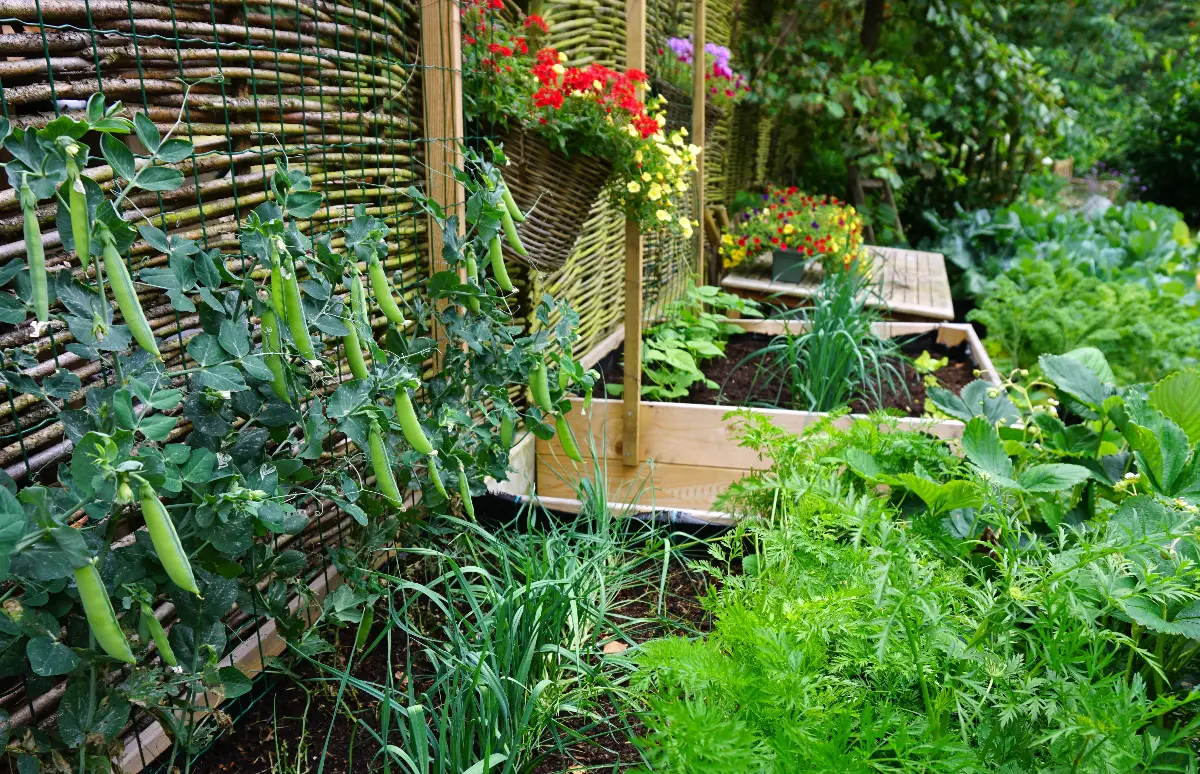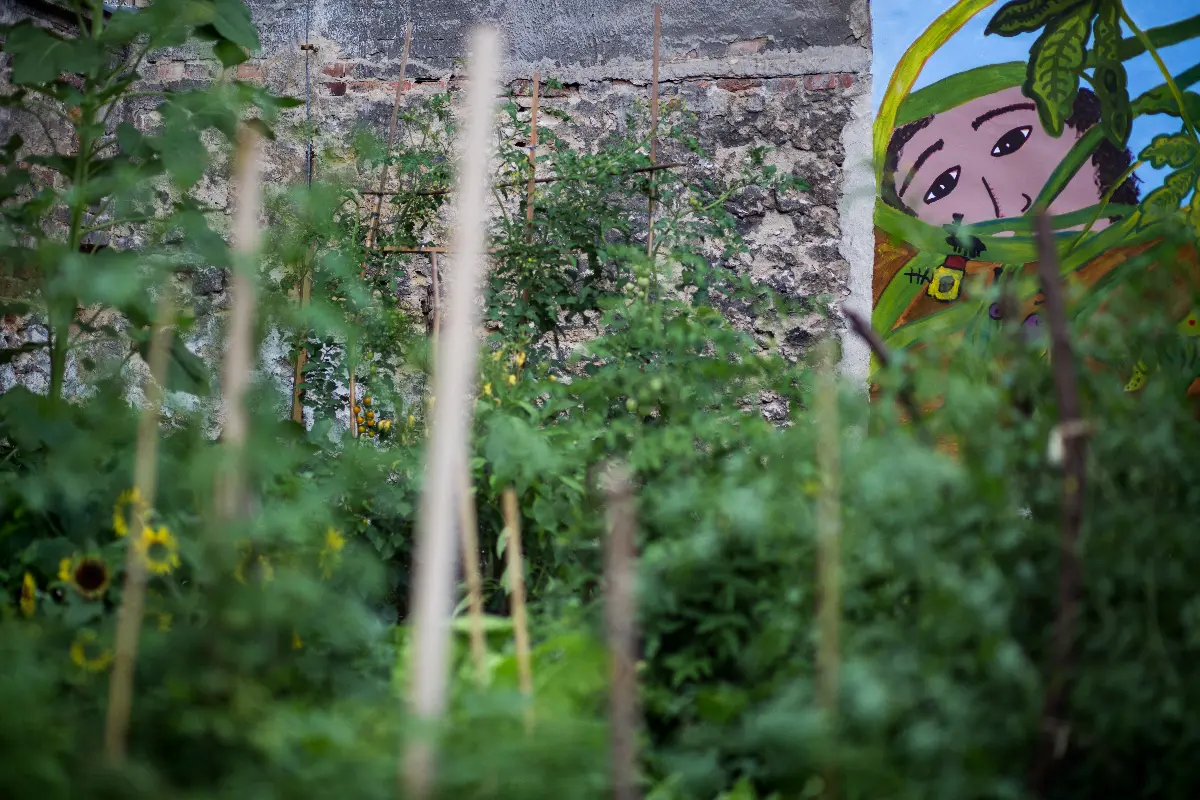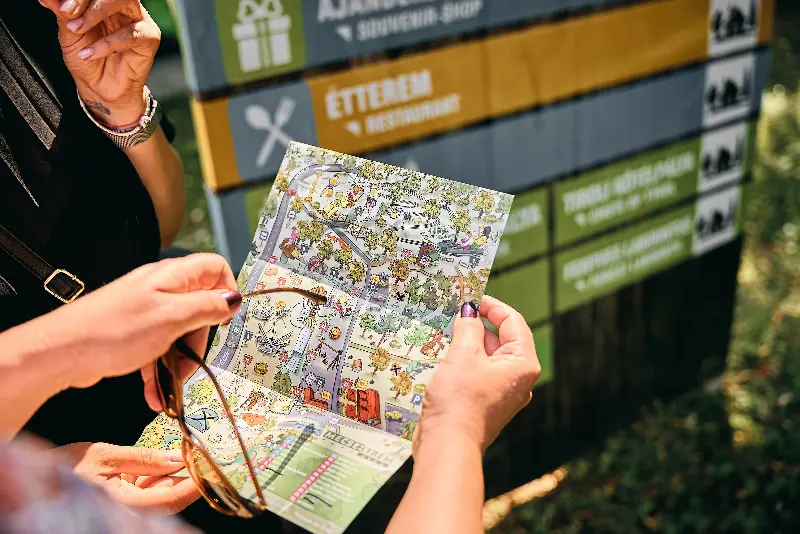
Helyszín címkék:
Is it a utopian idea to cultivate land in the city centre – or not?
Szabó Sára
For four years now, the Green Spot Community Garden project has been operating in Pécs, breathing new life into a barely 330 square metre area of the city centre that had been untouched and neglected for decades. This enclave-like inner area space, wedged between properties and with a unique approach, is like a green oasis. No chemicals, but community and broad social cooperation. The example is exemplary, but the big question is how this can be integrated into the waste management and plant management systems of large cities, under the egis of sustainability.

They tried many things, some that didn’t fit the picture
On this piece of land, since 2018, volunteer urban gardeners have been able to grow food and ornamental plants on a shared basis without leaving the city border. A perfect compromise for those who, despite all the concrete and dust, were attracted to the city by the possibilities. The garden’s 36, 3 square metre plots are currently cultivated by 41 active members, consistently at the limit of membership capacity. The initial concept has changed very little, according to the project’s originator, but a number of frivolous ideas have been dropped. This has been the case with the combined operation of the local farmers’ market, the creation of a community buffet and weekly workshops. “We liked it, we tried it, but the logic of the operation meant that these projects were not suited to such a small area,” says Gergő Hajba.

What is certain, however, is an extension: a pergola will soon be built over the vineyard and a reservoir will be constructed in the south-east corner of the plot. One of their plans for this autumn is to partly cultivate the front garden of the property, but also to improve the paved ‘flaster’ area, which will be used as a stage for events. Expansion or not, the Green Spot is already producing excess volumes, with plot tenants “harvesting” far more food than they can consume. Although it is difficult to give a true picture of how much food 41 members produce from 36 plots of land without concrete measurements, Gergő Hajba explains that, depending on the seasonality, they produce more leafy vegetables, herbs, as well as peppers, tomatoes and squashes than they actually need from the end of April to mid-October. The surplus is canned (fermented, less often dried) by the members individually, some freeze it, and some offer, donate or trade it.
However, these gardens are most important not for the amount of food they produce, but for their environmental education and their social role. They build community, provide a community for lonely people and, last but not least, introduce people to farming in an urban environment.

Specialities can also be found in the heart of the city centre
For a city centre setting, the Cape gooseberry plantation, the patisson, the long-forgotten edible plants of the garden, the orachle spinach, the sweet potato and the ramson are certainly worth mentioning, although the Mecsek plains are also rich in the latter in spring.
A cute initiative or a sustainable urban model?
“Every year, the concept of sustainability is part of a more and more heated discourse. Unfortunately, I see less and less of our participation and conscious engagement in this debate. We tried to be a role model – in terms of encouraging similar gardens across the city – for a while, but then we let it go for lack of motivation.” – says the garden coordinator, who says that in Hungary today, these gardens are more about constructive leisure, learning about growing plants, environmental education and urban composting. He says that they also received coffee grounds from local restaurants in the first year, but that they had a finite use for them in a small garden of this size.

If municipalities, for example, were to take a systematic, programmatic approach, the role of these gardens could be significantly increased in large cities. This could lead to more well-maintained, well-programmed gardens in waste areas. Bringing commercial gardens to life in certain attractions, such as heritage gardens and parks, would be a particularly good opportunity. Whether on a voluntary basis, in partnership with local educational institutions – kindergartens, schools – these gardens could have a positive impact on the contributors concerned, and even an economically beneficial cooperation. We can only hope that the future will bring change, and that there will be stronger models that can be applied in micro-macro urban environments.




